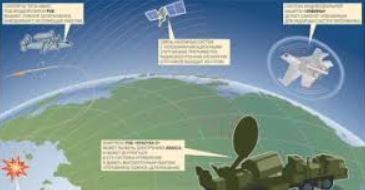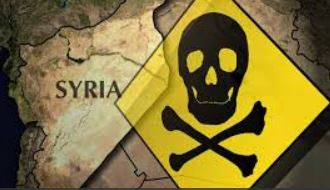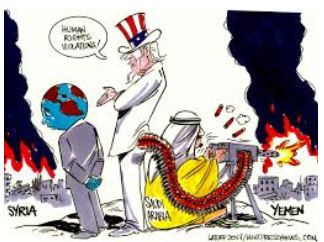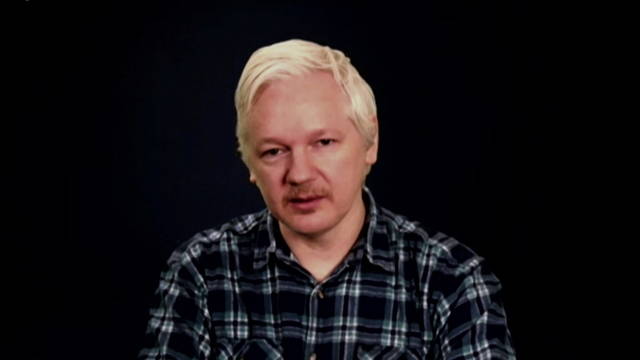Bulletin N° 747
Subject
:
Comparative Histories of Class Struggle & the Role It Plays in War and other Social
Configurations.
April 13, 2017
Grenoble, France
Dear
Colleagues and Friends of CEIMSA,
Comparative histories of cultures and political economies can teach us
much, I think, about ourselves, and Fernand Braudel offers us such lessons in one section of his last
volume of Civilization
and Capitalism, 15th to 18th Century. Toward
the end of Chapter 5, “For and Against Europe: The Rest of the World,” he
devotes twenty-five pages to a remarkably vivid description of growth of
the medieval market economy in Russia. In this section, entitled “The Russian
world-economy: a world apart,” he identifies the obstacles in medieval times
that served to retard the political development of a unified Russian state, and
the outlets available that eventually secured a Russian “world economy” (by
which he means an economy that stretched beyond local, regional and national
limits, and overlapped into markets beyond the national borders). The sporadic
economic expansion of early Russia –which by fits-and-starts expanded then receded
in faraway places like Peking, Constantinople, and saw traders trudging across
the desolate, sparsely populated landscape of Siberia—is a historic lesson in
determination and improvisation of early entrepreneurs, learning "to buy cheap
and sell dear" in the context of increasingly powerful state apparatuses.
The yoke of serfdom in Russia: an ever-increasing burden.
In Russia as elsewhere, state and society
went hand in hand. A strong state corresponded to a tightly controlled society,
condemned to produce the surpluses from which the state and the upper class
lived –for without the latter the Tsar would have been unable to control
unaided the great mass of peasants who represented the essential source of
royal income.
Every Russian folk tale has four or five
main characters –the Peasant, the Landlord, the Prince, the Artisan and the
Merchant (the two last-named usually being, in Russia, peasants who had gone up
in the world but who remained socially and in the eyes of the law peasants
still, subject to the constraints of the seigniorial society). And this was a
regime becoming more and more oppressive: from the fourteenth century the lot
of the peasants grew steadily worse from the Elbe to the Volga.
But Russia did not follow the usual pattern.
In Poland, Hungary and Bohemia, the ‘second serfdom’ was established to the
advantage of the nobles and magnates who stood between the peasants and the
market and who controlled supplies to the towns, that is when the latter were
not purely and simply their personal property. In Russia, the leading role was
taken by the state: everything was governed by the state’s needs and
undertakings and by the heavy weight of the past: three centuries of fighting
against the Tartars of the Golden Horde was even more effective than the
Hundred Years’ War which had given rise to the authoritarian monarchy of a
Charles VII or a Louis XI. The solution adopted by Ivan the Terrible (1544-84)
who founded and shaped modern Muscovy, was the displacement and if necessary
suppression of the old aristocracy and, in order to have an army and an
administration obedient to his desires, the creation of a new service nobility,
the pomechtchiki to whom were granted for life the lands confiscated
from or abandoned by the old nobility, or the virgin lands in the southern
steppes which the new ‘nobleman’ would have to bring under cultivation with the
aid of a few peasants or slaves. For slavery persisted among the Russian
peasants longer than is sometimes thought. As in early colonial America, the
problem was the supply of labor, which was scarce, rather than land, which was
plentiful.
And this is what in the end led to serfdom
and extended it. The Tsar had brought his nobility to heel –but the nobility
had to live. If its peasants deserted it to colonize the newly-conquered lands,
how was it to survive?
Seigniorial property, previously based on a
regime of free tenants, was transformed in the fifteenth century with the
appearance of the domain, an estate which the landlord farmed himself, as in
the West, and which was established at the expense of peasant holdings. The
movement began among the la nobility and spread to monastery-owned estates and
those of the state. The domain sometimes employed slave-labor, more often that
of indebted peasants who voluntarily enslaved themselves to pay off their
debts. The system tended increasingly to demand payment of dues in the form of
labor from the free tenant, and compulsory labor increased in the sixteenth
century. But the peasant always had the possibility of flight –to Siberia after
the late sixteenth century or better still to the black earth lands of the
south. Their constant movements had become an endemic problem, as they
persisted in changing masters or making for the virgin lands of the ‘frontier’
or perhaps trying their luck at crafworking, peddling
or small shopkeeping.
. . . [There were designated dates in the Calendar,
such as the feast of St. George, Christmas, Easter, and so on… when a peasant had the right to leave
his master, provided he paid what he owed him.]
Such peasant mobility threatened the
foundations of seigniorial society, whereas it was the policy of the state to
shore up this society, turning it into an instrument adapted to serve the
crown: every subject had his place in an order which laid down the duty of one
and all to the prince. The latter had therefore to call a halt to the escapades
of the peasants. For a start, the feast of St. George was declared the only
legal day for departures. Then in 1580, an edict by Ivan IV suspended all
freedom of movement ‘temporarily’ until further notice. The temporary ban was
to last . . . .
Such a development was only possible to the
extent that the Tsar wholeheartedly took the side to the nobility. Peter the Great’s ambition –to develop a fleet, an army and an
administration—required the reduction of the whole of Russian society, noble
and peasant alike, to obedience. The priority accorded to the needs of the
state explains why, unlike his Polish opposite number, the Russian peasant
although in theory reduced to total serfdom in 1649, was in fact subject to obrok (dues payable in money or in kind, and to the state
as much as to the landlord) rather more than to barchina
or forced labor. Where this did exist, even in the worst periods of serfdom, in
the eighteenth century, it never exceeded three days a week. The payment of
dues in cash clearly implies the existence of a market to which the peasant
always had access. Indeed it is the market which explains the development of direct
farming by the landlord of his domain (he wanted to sell its product) and no
less the development of the Russian state, which depended on income from
taxation. Depending which way one looks at it, one could equally well say
either that the early appearance of a market economy in Russia was consequent
upon the opening up of the peasant economy, or that it was the condition of
such opening. In the process, Russia’s foreign trade with Europe (which some
people would no doubt dismiss as comparatively insignificant compared to the
huge domestic market) had a part to play since it was Russia’s positive balance
with the West which injected into the Russian economy the minimal monetary
circulation –silver for Europe or China—without which market activity would
scarcely have been conceivable, certainly not at the level reached in practice.
This basic freedom –access to the
market—explains many contradictions. On one hand, the status of the peasant
clearly deteriorated: in the age of Peter the Great and Catherine II, the serf
had become a slave, ‘a thing’ (in the words of the Tsar Alexander I), a chattel
which his master could sell when he pleased; the peasant was powerless in the
face of seigniorial justice which might sentence him to deportation or imprisonment;
moreover, he was liable for military service, could be enlisted as a sailor n
the navy or merchant fleet, or drafted to work in the manufactories. This was
indeed why so many peasant revolts erupted, to be regularly suppressed in
bloodshed and torture. The Pugachev rebellion
(1774-5) was only the most dramatic episode in this stormy history. On the
other hand, it is quite possible that, as Le Play later thought, the living
standard of Russian peasants was comparable to that of many peasants in the
West –in some cases at least, since one might find on the same estate serfs
living in near-comfort alongside destitute peasants. And seigniorial justice
was not equally harsh everywhere.
It is also true that there were loopholes:
serfdom allowed odd little pockets of freedom. Russian serfs frequently
obtained permission to engage either full- or part-time in artisan trades, in
which event they could sell the product of their work. . . .
Some serfs became, with their master’s
blessing, peddlers, traveling salesmen, shopkeepers in the suburbs or in the
town centers, or carriers. Every winter, millions of peasants hauled goods
accumulated during the fine season into town on sledges.
Furthermore, the ancient
tradition of the rural craftsmen who worked for the market –the kusari who had all but abandoned agriculture by the
sixteenth century—developed to an extraordinary degree between 1750 and 1850.
This huge craft production far outweighed that of domestic outworking by
peasants for city manufacture. . . .
No less spectacular were the
fortunes made by certain serfs in wholesale trade. This was a profession in
which there were comparatively few bourgeois –something peculiar to Russia. As
a result, peasants hastened to take it up and prospered –sometimes against the
law but also with the protection of their landlords. Speaking in the name of
the Russian government in the middle of the eighteenth century, Count Munnich stated that for a century, ‘in spite of all the
prohibitions’ . . . that the growth and
‘present prosperity’ of wholesale trade ‘are due to the competence, hard work
and investment of these peasants’.
For these nouveaux riches who
remained serfs in the eyes of the law, the drama, or perhaps one should say the
comedy, began when they tried to buy their freedom. Their master was usually
reluctant to cooperate, perhaps because it was in his interest to continue to
collect substantial rents, perhaps because his vanity was tickled by keeping
these millionaires under’ his command, or because he wanted to raise their
emancipation money to prosperous heights. The serf for his part, in an effort
to release himself at least cost, took great pains to conceal the size of his
fortune and frequently succeeded.
In the end, Mother Russia was
absorbing into her bloodstream not only silver from the West but also a kind of
capitalism. The innovations the latter brought with it were not necessarily
earnest of progress; but under their weight the old regime began to crumble.
Wage-labor made a very early appearance and developed in the towns, in
transport, and even in the countryside for the urgent seasonal tasks like
haymaking and harvest. The workers who hired themselves were often ruined
peasants setting out to seek a living as farmhands or laborers; artisans who
had lost all their money and continued to work in the posad,
the worker’s district, but now on the payroll of a more fortunate neighbor, or
poor men who hired as sailors;, boatmen; haulers (there were 400,000 burlaki on the Volga alone). . . .
But the picture should be
presented neither in too favorable nor in too gloomy a light. We are speaking
in all cases of a population accustomed to privation; to surviving in harsh
conditions. Perhaps the most telling image is that of the Russian soldier who
was, we are told, ‘really easy to feed. . . . He carries a little tin box, and
has a small flask of vinegar, a few drops of which he puts into his drinking
water. He can withstand hunger better than any other man; and when meat is
given out to the troops he regards this largesse as a treat’. When the army
stores had run out of food, the Tsar had only to declare a day of fasting and
crisis was averted.(pp.446-451)
. . .
The price of European intrusion.
Peter the Great’s
military victories and his far-reaching reforms are said to have ‘brought
Russia out of the isolation in which she had hitherto lived, a formula which is
neither entirely false nor entirely correct.
. . . Europeans … found it easier to penetrate the Russian stronghold
and by increasing their share of trade to conquer the Russian market, shape it
to suit their own purposes as far as possible. . . .
The best way to promote trade
in poorly-developed countries was to import precious
metals: the European merchants allowed the same ‘hemorrhage of specie’ to Russia
as they did to the Levant ports or the Indies –with the same results: the
progressive takeover of the Russian market, with the real profits being made on
the return journey by the resale or redistribution of merchandise in the West.
What was more, the maneuvering of foreign exchange on the Amsterdam and later
the London money market, meant that Russia was sometimes fobbed off with
meaningless promises.
Russia thus became accustomed to receiving
the manufactured articles and luxury goods of Europe. Having been a late
entrant to international trade, she would subsequently find it hard to
disengage from it. Her rulers came to think that the development taking place
under their eyes was their own work, and they encouraged and helped it to
penetrate their country as a new structural element, seeing it as bringing
advantages both to themselves and to a Russia now open to Enlightenment. But
was Russia paying too high a price ? . . .
When all is said and done however, there was
no comparison between the Russian situation and the complete dependence of,
say, Poland. When the European economy launched its assault on Russia, the
latter had already embarked on a course of action which protected her domestic
market and the development of her own artisan production, her own manufacturing
enterprises created in the seventeenth century, and her own active commerce.
And Russia had even adapted very well to the ‘industrial pre-revolution’,
that is to the general upturn in production of the eighteenth-century.
On state orders and with state assistance, mines, foundries, arsenals, new
manufactories of silks and velvets and glassworks sprang up from Moscow to the
Urals. And an enormous substratum of domestic and craft industry continued to
operate. On the other hand when the real industrial revolution came, in the
nineteenth century, Russia was to mark time and fall further and further
behind. This was far from the case in the eighteenth century when, according to
J. Blum, Russian industrial development was equal and sometimes superior to
that of the rest of Europe.
None of this prevented Russia from –more
than ever—fulfilling her role as provider of raw materials: hemp, flax, tar,
ship’ masts; and of foodstuffs: grain and salt fish. Sometimes it was even the case
that –as in Poland—exports did not correspond to a genuine surplus. . . . On 28
January 1819, Rostopchin wrote from Paris to his
friend Simon Vorontsov in London, ‘Russia is an ox
which they are eating and turning into stock cubes for other countries’ . . . .
Rostopchin’s
imagery may be strong but he was not entirely mistaken. It should not be
forgotten however that these deliveries of raw materials to Europe provided
Russia with a positive trade balance and thus with a constant supply of money.
And this in turn was the pre-condition for the introduction of the market into
a peasant economy, an essential element in the modernization of Russia and in
her powers to resist foreign invasion.(pp.462-466)
In contrast to early Russian economic expansion, as described by Braudel’s histoire
de longue durée; Michael Hudson’s histoire immédiate
of contemporary American economic expansion describes and analyzes the free market economy that exists today and how,
as an ideology, it has morphed into a cover to suit the current needs of
capital accumulation, i.e. corporate war capitalism & casino economics.
(See the discussion of his recent book, Junk Economics, where he calls
for class struggle to overcome the political monopoly held by “The Two-Party
System,” both of which represent the same corporate interests that suck the
oxygen out of the air, depriving the general population of vital information on
which their lives literally depend.
What these two approaches to the history of
capitalist civilization share in common are the lessons of how social class
relationships have evolved and devolved according to economic interests and the
political power relationships which accompany these interests, as new
opportunities appear on the scene.
In the 15 items below CEIMSA readers might arrive at a more critical
understanding of the nature of the political and economic forces (and the
Imperial lies and deceptions) that have governed our behavior for too long, generation
after generation . . . .
Sincerely,
Francis Feeley
Professor emeritus of American Studies
University Grenoble-Alpes
Director of Research
University of Paris-Nanterre
Center for the Advanced Study of American Institutions and
Social Movements
The University of California-San Diego
a.
A Multi-level Analysis of the US attack
on Syria

by The Saker
The
latest US cruise missile attack on the Syrian airbase is an extremely important
event in so many ways that it is important to examine it in some detail.
I will try to do this today with the hope to be able to shed some light on a
rather bizarre attack which will nevertheless have profound consequences.
But first, let’s begin by looking at what actually happened.
==========
b.
The White House "Intelligence Assessment" Is No-Such-Thing - It Shows Support for Al-Qaeda

by Moon Of Alabama
==========
c.
Michael
Hudson discusses "Junk Economics" at The Democracy Collaborative
https://www.youtube.com/watch?v=QBMRbCtYNrU
(video)
Renowned Economist Michael Hudson
joined us for lunch on February 22 to discuss his new book "J is for Junk
Economics: A Guide to Reality in an Age of Deception." Hudson will be
working with the Next System Project on a new initiative that revolves around
money and banking. Be on the look out for more!
Hudson is a Research Professor of Economics at
the University of Missouri-Kansas City as well as at Peking University. He is a
prolific writer and author of many books, notably "Killing the Host: How
Financial Parasites and Debt Bondage Destroy the Global Economy."
You can learn more about Michael Hudson here: http://michael-hudson.com/
+
“J IS FOR JUNK
ECONOMICS: A GUIDE TO REALITY IN AN AGE OF DECEPTION”
by
Michael Hudson
https://www.youtube.com/watch?v=HAKdQqGO6i8
(AUDIO
Review)
==========
d.
The Khan Sheikoun Show - A New President
Proudly
Presented By Trump Productions

http://www.moonofalabama.org/2017/04/trumps-khan-sheikoun-production.html#more
by Moon Of Alabama
The "chemical attack" at Khan Sheikoun was faked and a show; though a number of people
were killed or hurt during its production. This video for example, of doctors and patients in an emergence room was pure theater,
taken over a longer time period. The main presenter was a well-known criminal Takfiri but with links to the British secret service.
The whole show was perfected, by specialists one would think, to fit for U.S.
TV screens.
==========
e.
The US Provided Cover
for
Saudi Starvation Strategy
in Yemen

http://www.informationclearinghouse.info/46825.htm
by Gareth Porter
==========
f.
Trump Attack on Syria a Deadly Political
Game
and Reflection of Deep Systemic Crisis

http://therealnews.com/t2/index.php?option=com_content&task=view&id=31&Itemid=74&jumival=18838
Gerald Horne and Paul
Jay discuss the cynical politics behind the attack and the decay and dysfunctionality of the American state
=========
g.
U.S. 'backed plan to launch chemical
weapon attack on Syria
and blame it on Assad's regime' January 29,
2013
by Louise Boyle
Leaked emails have allegedly proved that the White House gave the
green light to a chemical weapons attack in Syria that could be blamed on
Assad's regime and in turn, spur international military action in the
devastated country.
A report released on Monday contains an email
exchange between two senior officials at British-based contractor Britam Defence where a scheme
'approved by Washington' is outlined explaining that Qatar would fund rebel
forces in Syria to use chemical weapons.
Barack Obama made it clear to Syrian president Bashar al-Assad last month that the U.S. would not tolerate
Syria using chemical weapons against its own people.
=========
h.
Julian Assange vs. Allan Nairn:
Did WikiLeaks Inform Voters or Aid Trump's
Right-Wing Revolution?

https://www.democracynow.org/2017/4/10/julian_assange_vs_allan_nairn_did
=========
i.
Glenn Greenwald:
Democrats Eager to Blame "Everybody But
Themselves" for Collapse of Their Party
https://www.democracynow.org/2017/1/6/glenn_greenwald_democrats_eager_to_blame?autostart=true
=========
j.
From
The Center for Research on Globalization
Michel Chossudovsky, Director

Syria Chemical Weapons Saga, The Staging of a US-NATO Sponsored Humanitarian Disaster
Hillary Clinton Approved Delivering Sarin
Gas to Syrian “Rebels” : Seymour Hersh
Why the Latest Claims Against Assad Are a
Pack of Lies
http://www.globalresearch.ca/why-the-latest-claims-against-assad-are-a-pack-of-lies/5584556
U S Backed Plan for Chemical Weapon Attack on Syria to be Blamed on Syria (Deleted Daily
Mail Article)
Pentagon Trained Al Qaeda ''rebels'' in Use of Chemical Weapons
Washington's False Flag:--U.N.Confirmed
that U.S. Supported " rebels" (Terrorists)
Were Using Chemical Weapons that Were Falsely Blamed on Assad's Troops
Former CIA Officer:-The Intelligence Confirms the Russian Account
on Syria
The Gassing Lying Game in Syria
http://www.counterpunch.org/2017/04/11/the-gassing-game-in-syria/
Syria: Trump May Have Just Started World War III
http://www.globalresearch.ca/syria-trump-may-just-have-started-world-war-iii/5583998
You Probably Won’t Read This About Syria :
Few Cared
=========
k.
From: Mark Crispin Miller
Sent: Tuesday, 11 April, 2017
Subject: [MCM] Talkin' World War One Blues...
What a difference a century makes, eh?
100 years ago, the US government pulled off a propaganda masterpiece the likes
of which
America had never seen before—and so
Americans fell hard for it, millions of them signing
up to save poor France and Belgium from "the
Hun," and thereby "make the world safe for
democracy."
The propaganda was so slick, and so pervasive, that those boiling over with indignant
fury
at what Germany was doing Over There quite literally had no
clue that those atrocities were
largely fiction, or that that war was really NOT a
great humanitarian crusade but an apocalyptic
brawl between imperial competitors.
So off they went to that unprecedented slaughter, which turned out to be
nothing whatsoever
like the chivalrous adventure that those wide-eyed troops had
been encouraged to expect, but
an unimaginable clusterfuck
comprising poison gas, machine guns, land mines, barbed wire,
tanks and other grisly innovations that had somehow gone
unmentioned by the president and
everybody else who sold the people on that "war
to end all wars."
The shock was great; but since the USA was in that war for only some ten
months, it was a lot
less shattering for those Americans than it was for all the
European millions who were massacred,
disfigured, maimed, bereaved and/or uprooted
throughout their four years of war: a trauma that
birthed fascism Over There, while Over Here it
"only" gave us the Espionage Act, a new cult of
state secrecy, and a larger and more powerful FBI, while also
fatally dividing the American left,
putting a full stop to the Progressive Era,
and—not least—teaching the elites in US government
and business that smart propaganda WORKS, especially on
those who don't perceive it, and aren't
told anything about it.
So that's what happened back in 1917, when Americans were so much easier to
jerk around than we are.
MCM
from 4/21/16, see also :
A New Anti-Assad
Propaganda Offensive
https://consortiumnews.com/2016/04/21/a-new-anti-assad-propaganda-offensive/
=========
l.
THE NEW YORKER
THE ASSAD FILES
http://www.newyorker.com/magazine/2016/04/18/bashar-al-assads-war-crimes-exposed
by Ben Taub
Capturing the top-secret documents that tie the Syrian regime to
mass torture and killings.
=========
m.
Hundreds Killed as US Bombs ISIS Chemical Depot: Syrian MoD

http://www.informationclearinghouse.info/46856.htm
by Zen Adra
=========
n.
Racing To The Precipice
Prof. Noam Chomsky
(March 2017)
https://www.youtube.com/watch?v=TK0R_06zOOY
=========
o.
What BBC won't tell you
about Brexit:
Decline of Britain since
1973
Why leave EU?